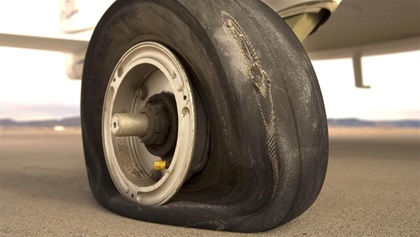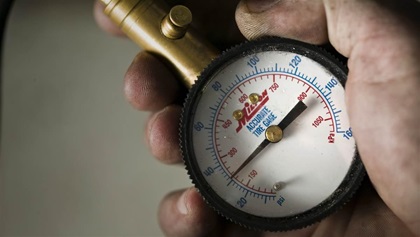Aircraft tires
When the rubber hits the runway

In 1904, his 20-winged monstrosity lifted (unstably) into the air, flew 50 feet, and returned to terra firma—on wheels. Hardly an impressive flight, but it set the stage for the bulk of all landings over the next century, minus those on water or snow.
The earliest airplane tires were solid rubber glued on spoked wheels, but it wasn’t long before the air-filled airplane tire was introduced, debuted by Traian Vuia in 1906. By 1909 Goodyear Tire and Rubber Co. was making pneumatic airplane-specific tires; and they are still in the business today. The other major players in the now $1.5-billion-a-year airplane tire market are Bridgestone, Dunlop, Michelin, and Specialty Tires of America.
That’s a lot of dough for rubber. Of course, a lot of it is spent in the commercial and military side. Tires for commercial jets can sell for as much as $5,500 each, and bear in mind that a commercial jet needs a lot more than the three tires most of us use. Cha-ching!
In general aviation, the cheapest tire is probably the tiny three-inch-diameter Azusa tailwheel tire. Topping the chart is the Goodyear Flight Radial for the Gulfstream G500 business jet at $3,512 a pop. Pardon the pun. Most GA tires run in the $100 to $300 range. Of course, that price doesn’t include inner tubes, which the lion’s share of general aviation tires still use. But airplane tires are increasingly tubeless. And, yes, it is legal to put a tube in a tubeless tire if you have the wrong kind of wheel. Meanwhile, as in the beginning, there are still solid rubber airplane tires—generally tailwheels where weight is less of an issue because of their small size.
Speaking of size, what’s the largest tire for the airplanes we fly? That would be the Bushwheel tundra tire, which has a 35-inch diameter.
Most airplane tires have a ribbed tread pattern for paved runways, but you can still get a diamond pattern for unpaved strips, a combo ribbed with diamond-edge for all weather, and classic smooth (think old Piper Cub). There’s also a special jet tire that has a funky ridge of rubber called a chine that deflects water on wet runways away from the engine intakes.





